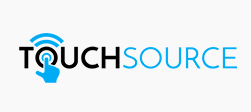To Improve The Patient Experience, Healthcare Technology Needs To Go Beyond Mobile Apps

For decades, U.S. healthcare systems have been exploring ways to improve the patient experience with an emphasis on not only improving outcomes but streamlining the process of care. This has led to a host of new healthcare technologies coming online in the last several years. In fact, the healthcare IT market grew at a rate of 16.7% from 2019 to 2020 and is estimated to witness year-over-year growth ranging from 20.5% to 31.6% in the next five years.
Many of these new technologies are focused on delivering care and healthcare services to patients remotely through mobile apps. But according to Ajay Kapoor, CEO of TouchSource, if healthcare systems really want to ensure their patients are having a better, streamlined experience, they need to start closer to home.
“Often, patients with the least positive health outcomes are those that have the most difficulty navigating healthcare — starting with when they walk into a facility,” Kapoor said. “Patients are disoriented in the facility and may even have language barriers or education barriers that prevent them from accessing the care that they need. We believe that healthcare providers and facilities have a responsibility to support all of their communities with communication, signage and support in their facilities, not just online. “
At TouchSource, Kapoor and his team create smart digital signage, touchless interactive solutions, video walls and more for commercial buildings, including healthcare facilities. He said that one of his fears is that in the race to develop “cool” technology, providers are forgetting their responsibilities in the places that really matter for their patients: where they are getting care.
TouchSource addresses this by creating easy and accessible navigation systems within facilities — from digital signs with multilingual directories to virtual step-by-step maps that lead patients where they need to go. The facilities also use these digital signs as key communication tools for patients and staff, conveying messaging around construction, educational content for healthy behavior or human resources information for providers.
Along with that, TouchSource technology can be used to make hospitals and outpatient facilities a brighter place for patients and can be programmed to display art and other calming images.
“We’re not just looking to make healthcare facilities easier to navigate. We uplift the experience with digital design and art that provides patients and providers with a built environment that feeds their souls and nurtures their care,” Kapoor said.
Eden Hill Medical Center in Dover, Delaware, hosts 2,500 people daily who come to visit its 17 physician offices, an ambulatory surgery center, urgent care, lab and on-site pharmacy. In 2020, it also had an aging, hard-to-manage slat directory that was so hard, the facility had to hire an on-site greeter to direct people where they needed to go. They brought in TouchSource, which installed a wall-mounted digital directory with 3D wayfinding and a red-lined map that clearly showed visitors how to reach their destinations. It also provides visitors with a QR code they can scan on their smartphones and follow those directions.
“Healthcare is all about prioritizing the patient experience. We have a chance to shape that experience from the moment people enter our doors,” said Trish Johnson, executive administrative assistant for Eden Hill Medical Center. “Sometimes patients can be nervous arriving for appointments, so it’s helpful that they are easily guided where they need to go. By providing mobile wayfinding, we’re also helping to eliminate a stressful situation for them.”
She added that the system has given her back time she used to spend hand-updating the old directory. Now she is able to change it with just a few clicks on her computer.
Florida-based Memorial Healthcare System has also installed TouchSource screens in its facility. Matthew Horne, Memorial’s director of property management, said that the technology has helped the system in its mission to enhance the patient experience.
"At Memorial Healthcare System, we focus on providing a positive experience from the moment patients reach campus and throughout their care continuum,” Horne said. “Having a mobile directory meets the contactless preferences of today's patients, providing an aesthetically and functional solution that adds to their overall patient experience.”
Kapoor said that in the end, the patient experience should be top of mind for healthcare facilities. Having TouchSource technology is one way they can show they care.
“Ultimately, our goal is to make the physical environment an uplifting experience for patients,” he said. “They should feel like the facility supports their needs and a positive outcome for their visit.”
This article was produced in collaboration between TouchSource and Studio B. Bisnow news staff was not involved in the production of this content.
Studio B is Bisnow’s in-house content and design studio. To learn more about how Studio B can help your team, reach out to studio@bisnow.com.

